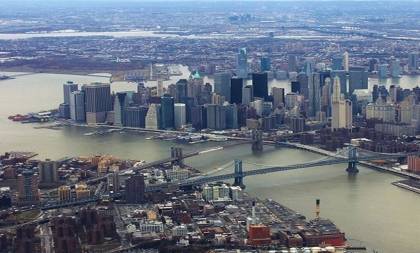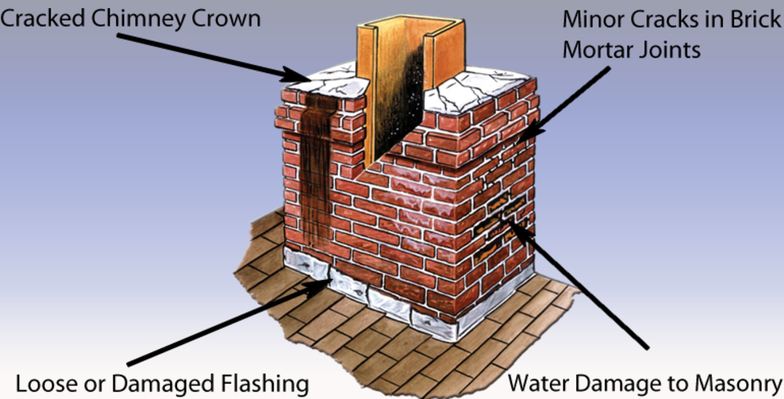
Chimney Repair
Chimneys are very complicated to repair and maintain. Patching the damaged areas of a chimney is usually only a temporary solution. If the proper restoration is not performed, the chimney is left vulnerable to several hundreds, if not thousands, of dollars of future repair costs. It is not only critical to know how to fix the current problem, but to understand how it occurred, and to protect the rest of the chimney structure from future complications.
Often, chimney leaks can come from cracks in the chimney crown, flashing, deteriorated mortar joints, and/or moisture penetration through the pores of the bricks and mortar. Other variables that cause these problems to occur can be linked to the age of the chimney, material used to build the chimney, and craftsmanship.

Usually, problems with crowns occur because they are made from just a half inch of plain masonry cement. Masonry cement does not have reliable bonding properties, as it is delicate, brittle and rigid. The crown commonly cracks within a couple of years due to freezing-thawing cycles. Once the cracks occur, water works its way into the crown, which then freezes, expands and starts loosening the bricks from the mortar. This will slowly cause the chimney to fall apart from the top down.
By the time realization of this occurrence happens, the top portion of the chimney is loose and usually needs to be taken down and rebuilt. When we perform these types of repairs, we flair the top 3 to 4 courses of bricks out ½” per course to create a 1 ½” to 2” drip edge to make the water fall down to the roof or ground. This will prevent future damage by not having the water run down the body of chimney and seep into weak areas. In addition, Sposato Masonry tints our mortars to blend into the existing mortar joints as much as possible.
This creates a solid appearance and the repaired areas are hardly noticeable. Our crowns are made from a high psi polymer modified cement mix. Polymer increases freezing-thawing durability, flexibility and bonding properties in cement mixes. It also makes the cement more waterproof to keep the inner structure of the chimney protected from moisture.
Another main repair factor that needs to be accounted for is deteriorated mortar joints. Mortar joints are 4” in depth the size of the bricks. Mortar joints usually crack due to freezing-thawi or corrosion which causes deterioration from the outside in. When repointing is performed, we can only grind out roughly ¾’ of the damaged mortar. New mortar is then installed over the remaining mortar to seal the surface and keep water out. The problem with majority of pointing work is that it is performed with standard mortar. Standard mortar again has poor bonding qualities, especially to older cement, and is not flexible or waterproof.
When polymer modified mortar is used, it has superior bonding properties. It is plastic cement and basically becomes one with the mortar behind it and brick around it. It also has waterproofing properties which helps keep the moisture out. Some moisture can be absorbed; however the cement can handle the movement of the freezing-thaw due to its flexibility.
Spalling and efflorescence is also another major chimney repair issue that is commonly improperly addressed. Spalling occurs when the brick absorbs moisture which freezes and expands in the winter time. After many winter seasons, the face of the bricks start bursting deteriorating the brick from the outside in. Efflorescence is caused by excessive moisture penetration through the masonry of the chimney. Efflorescence is a chemical reaction caused by the water reacting with the lime in the cement, which creates salt crystals that are pushed out to the surface. There are Efflorescence removers on the market, but it is very difficult to remove, and can sometimes not even be totally removed from the chimney. To resolve this issue, a penetrating 10 year water proofing sealer is applied to entire chimney. The sealer penetrates and clogs the pores of the bricks and mortar to create an invisible waterproof barrier to keep water and moisture out.

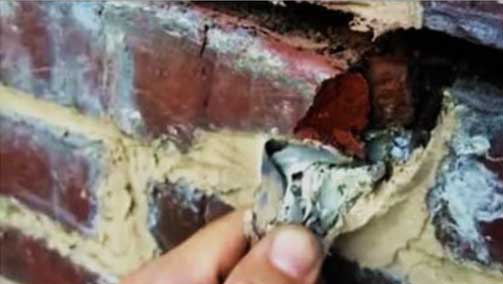




Chimney Repair
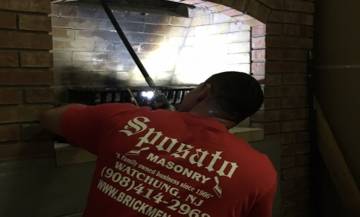
Chimney Cleaning
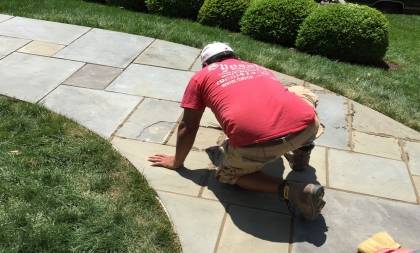
Bluestone Work

Brickwork

Basement & Waterproofing
